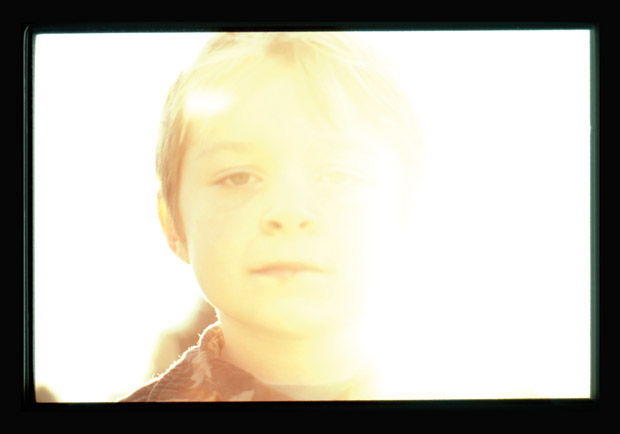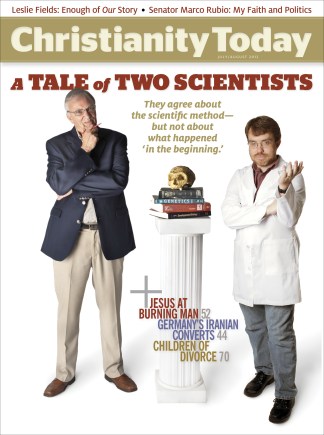Two years ago was the 25th anniversary of one of the most epic movies of all time. Every American not in a coma or an Amish community has seen Steven Spielberg’s Back to the Future, and if they haven’t, they can easily catch it on television, as TBS and TNT seem to rerun it every few hours.
The last time I caught a rerun of the 1985 science-fiction adventure, instead of switching the channel, I lingered and watched. I realized that the 25th anniversary was significant because Doc (Christopher Lloyd) had planned to travel 25 years into the future—to 2010—before those pesky Libyan plutonium dealers opened fire in the mall parking lot, sending Marty (Michael J. Fox) speeding off in the DeLorean back to the year 1955.
Once he arrives in 1955, Marty has to make his way “back to the future,” and must avoid any contact with any person to avoid irrevocably altering the future in a single encounter. But it just so happens that Marty has already befriended his dad and, oddly, has become his mom’s crush.
When Marty explains this to Doc, he asks to see the 1985 family photo Marty carries with him. Examining it, Doc points out that Marty’s oldest brother is already disappearing from the photo. Now that Marty’s mother has a crush on Marty and not on George (his father), his brother is being erased from existence. Marty must do all he can to make sure his parents fall in love in 1955 so that he might not disappear from 1985.
A Frightening Analogy
I had seen these scenes dozens of times before they solidified as a frightening analogy for my own family’s story. Just months before my own wedding, I sat with my mom in the living room of the home I had grown up in, as she explained that divorce was the next exit on the highway of our family’s history. It had been several weeks since she had told me that her and my father’s marriage was in serious trouble. Now, she told me more: They had gotten married way too young, noting that if she could do it all over again, she would have chosen another route for her life, someone other than my father to share life with.
The church can be the kind of community that children of divorce need only if we are brave enough to face into the topic.
I couldn’t help feeling a shadow come over me. I looked at our family portrait hanging on the wall across from us, and wondered if I might be disappearing. I glanced at my hand, wondering if I was becoming translucent like Marty did. My parents’ impending divorce made me feel thin, as if now that my parents’ marriage was disappearing, the divorce was becoming our shared identity, and I too was disappearing.
I existed only because my mother and father had become one, creating me out of the abundance of their covenant community. Now, standing amid the debris and shock of the collision that ended their marriage, all this felt up for grabs. If I was through their union, who could I be in their division? If I was because of their coming together, who would I be if they nullified the community that gave me life? Could I be at all?
A Triune Relationship
As so many psychologists, philosophers, and theologians have stated—most recently cultural commentator David Brooks and sociologist Christian Smith, but also theologians Dietrich Bon-hoeffer, Karl Barth, and Stanley Grenz before them—we are social animals with the mental ability to ponder our existence. The community of people we call family—those who made us and welcome us into their community of love—assures us that we rest secure on safe ground in this world. It is no wonder that so many happily adopted children will nevertheless embark on intense journeys to find their birthparents, whom many of them call their “real” parents. We desire to be found, to know and encounter those who brought us into the world.
As Jewish philosopher Martin Buber said, “In the beginning was relationship.” God, himself in triune relationship, spoke creation out of nothingness for the sake of relationship. In the same way, in his or her beginning, every child is meant to be welcomed into the beauty of existence through the embrace of mother and father.
Of course, when abuse and extreme neglect fester, the embrace is broken or becomes so contaminated that it wilts the humanity of everyone in it. Here, divorce may be a tragic necessity. But we should remember that such awful realities remain the minority among divorces in the United States. Reportedly, about two-thirds of divorces end low-conflict (i.e., no abuse or neglect) marriages, like that of my own parents.
As from relational community comes creation, so from the communion of husband and wife comes a child. A person is because the two have become one. While the child, no doubt, knows her parents as distinct persons, she never knows them outside the reality of their communion. She is the mysterious, finite other, born from their union. She can know them as individuals, but it is their union that is her home, because that is the place where her being is secure in community.
Young People and Divorce
I offer all this philosophical musing to underscore why divorce—which affects about 40 percent of Americans under age 21 today—is so devastating for young people. Our society assumes in conversation about divorce that the real issues are ones of knowledge and advantage. Popular psychologists and TV talk-show doctors tell us that divorce need not be a big deal as long as children know it’s “not their fault.” Such youth just need to know that Mommy and Daddy are voiding their union for their own reasons, ones that have nothing to do with them.
Further, our university-based number counters tell us that divorce should be prevented because it quickly takes away economic and social capital, so young people need structures and programs to keep them from losing their economic advantages.
God, himself in triune relationship, spoke creation out of nothingness for the sake of relationship. In the same way, in his or her beginning, every child is meant to be welcomed into the beauty of existence through the embrace of mother and father.
I don’t wish to diminish the psychological and economic impact of divorce. But if we truly are relational beings, then divorce is centrally an issue not of psychology nor of economics but of ontology—an issue of our very being. It therefore feels a little like being erased, like losing our being in the deep divide that separates our divorcing parents.
When a young person is informed of her parents’ divorce, it might be that her deepest questions are about her being: How can I be at all now that Mom and Dad aren’t together? Now that they are two, she is unavoidably divided. She has one room at Mom’s and another at Dad’s, one schedule at Dad’s and another at Mom’s. As philosopher Martin Heidegger said, we have our being in our practical way of living, in our actions. And now post-divorce, because this young person’s action and living is divided, so too is her very being. Her parents are seeking to reverse, to go back, to be as if the two never became one. But she can’t do this because she belongs (in the very material of her person that acts with and for them) to both of them.
The Church as Family
There is no easy answer, no magic pill to take to secure one’s shaken being after the divorce of your parents. Even now, 14 years after my parents’ divorce, I have significant moments of feeling raw, of wishing during the holidays that my mom and dad were together, that I didn’t have to explain to my children why they aren’t.
If divorce has this profound an impact on children’s spiritual groundedness, the church needs to think more deeply about how it supports those in marriages, helping young people wisely choose spouses and foster mutual love and partnership between them, so that divorce is unlikely to happen.
This won’t primarily happen through a packaged program offering practical information. Rather, what we need to support those in marriages, and in turn care for children of divorce—whether they’re 6 or 56 years old—is for the church to be a community of being that shares in the being of each other by sharing in the being of Christ.
According to Paul, the church is a body that shares in the communal union of the Father and Son through the union of its members. Sharing in each other’s being in this way makes the church a new family. It is not a new family that can deny or ignore our individual experiences of suffering and pain, like the divorce of our parents, but a community that suffers with and for us. In so doing, the church community confesses that God has taken us into a new union that is stronger than all death and brokenness, a union that connects our being with God’s own through the Holy Spirit.
We can be the kind of community that children of divorce need only if we are brave enough to face into the topic. It is amazing how few places there are for young people to talk about their experience of divorce, and how scared churches often are to give a space for young people to speak of the ontological binds that this experience puts them through.
This, then, is what churches need to do for children of divorce, something that is really not doing at all, but being: being together. The youth group, the children’s ministry, and the worshiping community on Sunday mornings all can be the community where children of divorce find ontological security, because the church, as theologian Edward James Loder once said, “knows of love greater than a mother’s or father’s.”
All of this begins with seeing the reality of children of divorce and empathetically acknowledging the complexity and difficulty of the situation in which they find themselves.
When my wife’s mother remarried, one of the 150 guests at the wedding approached my wife’s sisters and said, “I am very happy for your mom. But I know this day is really hard for you, and I am so sorry for what you must be going through today.” Ten years later, the siblings still talk about the profound importance of having just one person see them. The church can be the community that sees children of divorce, acknowledges their reality, and embraces them in the fullness of their experience.
Andrew Root is associate professor of youth and family ministry at Luther Seminary in St. Paul, Minnesota, and author of The Children of Divorce: The Loss of Family as the Loss of Being (Baker Academic).










